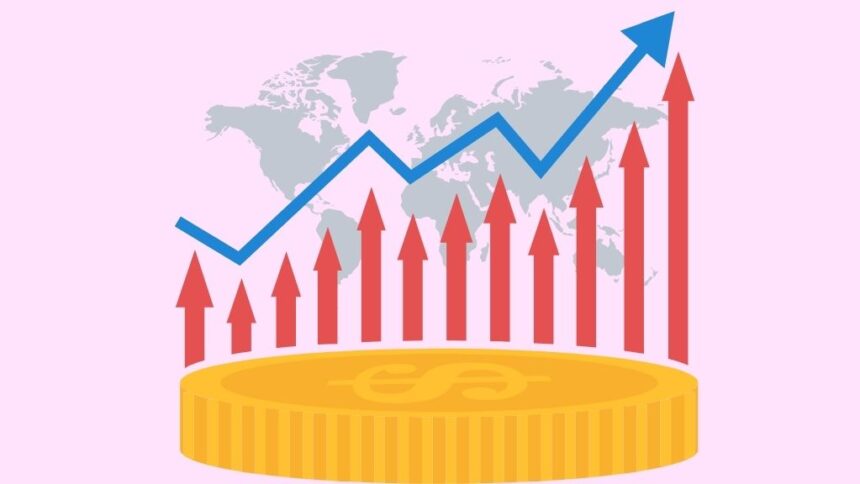Inflation can be incredibly disruptive to small businesses and slow their growth, so it’s important to make sure you’re doing everything you can to keep your business profitable in spite of rising costs. When thinking about how to deal with inflation as a small business owner, you have two main options: Cost cutting and spend optimization. While each has its own benefits, which one will work best for your business? Let’s take a closer look at the pros and cons of each approach to find out.
The Reality of Rising Costs
Inflation is when the cost of goods and services rise over time. A small business owner may not feel the effects of inflation immediately, but it will show up in their company’s profit margins eventually.
To understand how inflation affects a small business, it’s important to know what types of expenses are most likely to go up in price. The following is an example of common costs that can be expected to rise over time:
-costs for raw materials (e.g., food, fuel)
-costs for labor (e.g., wages)
-costs for property or rent (e.g., office or warehouse space)
Pare Down Your Workforce
If you have employees, one strategy for dealing with inflation is to cut costs by laying off some of your workforce. This might seem like a good solution at first, but it can also cause problems. For example, firing employees may leave you without the necessary knowledge and experience needed for your business to grow. Employees who are laid off may need unemployment benefits or other forms of government assistance that can get costly. Plus, if the overall economy continues on its downward trajectory and business conditions worsen, you might find yourself in the same position all over again.
Raise Prices
Raising prices is not always an option, but if you’ve tried every other avenue and still can’t make ends meet, it might be time. Raising prices is one of the most drastic things you can do for your business, so it’s worth considering all the factors and potential repercussions before making the decision. You’ll have a lot of considerations to take into account before deciding whether or not to raise prices. You’ll need to analyze your costs, look at what your competitors are doing, and consider what impact raising prices will have on your customer base.
Invest in Technology
One of the best ways to deal with inflation is by investing in technology, which can be done in two ways: cost cutting and spend optimization. The first way, cost cutting, is accomplished by investing in software that will automate or streamline processes. This will allow you to cut costs associated with labor, making it more affordable for your small business. The second way, spend optimization, is accomplished by investing in software that will help you make your marketing campaigns more effective while also spending less money on them.
Use Technology to Improve Efficiency
Marketing and sales solutions are key to success in business. Invest in marketing and sales solutions such as PPC ads, social media, email marketing, and more. You can also invest in tools that help you measure your marketing ROI like Google Analytics or HubSpot. Keeping up-to-date with the latest trends is important for small businesses. Technology is constantly evolving which means you’ll need new software and hardware. So invest in tech upgrades so your company isn’t left behind when it comes to digital marketing tactics.
Measure What Matters
In order to better understand how small businesses can deal with inflation, it’s important to look at two different strategies of cost cutting and spend optimization.
The first type of strategy is cost cutting, which is a strategy that takes place once the business has already achieved success and needs to maintain itself in an environment where there is high inflation.
The second type of strategy is spend optimization, which occurs before the business achieves success.
Cost-cutting measures are usually taken when things are going smoothly for the company and it wants to preserve that status quo by making adjustments such as reducing expenditures or cutting down staff. These changes can be made without having any negative impact on customers or employees.
Invest in Marketing and Sales Solutions
It’s important to remember that the key to success is marketing and sales. It doesn’t matter how great your product is if no one knows about it! To help you grow your small business in these tough economic times, here are some tips for investing in marketing and sales solutions:
- Invest in Marketing Solutions like advertising, public relations, and social media; this will help you get the word out about your business.
- Invest in Sales Solutions like CRM systems, training programs, and eCommerce tools; this will help you convert more leads into customers.
So what is the solution? How can small businesses react and adapt to inflation? The answer lies in the balance between cost cutting and spend optimization. It’s important to think about how each option could affect your business, both positively and negatively.
If you decide that you want to cut costs, it’s important that this strategy doesn’t come at the expense of quality. You might want to consider outsourcing some of your services or even buying cheaper materials for production if possible.
If you decide that you want to spend , optimization is the best way forward, make sure that there are no changes in quality or service level. Once again, outsourcing or sourcing cheaper materials might be useful here.

